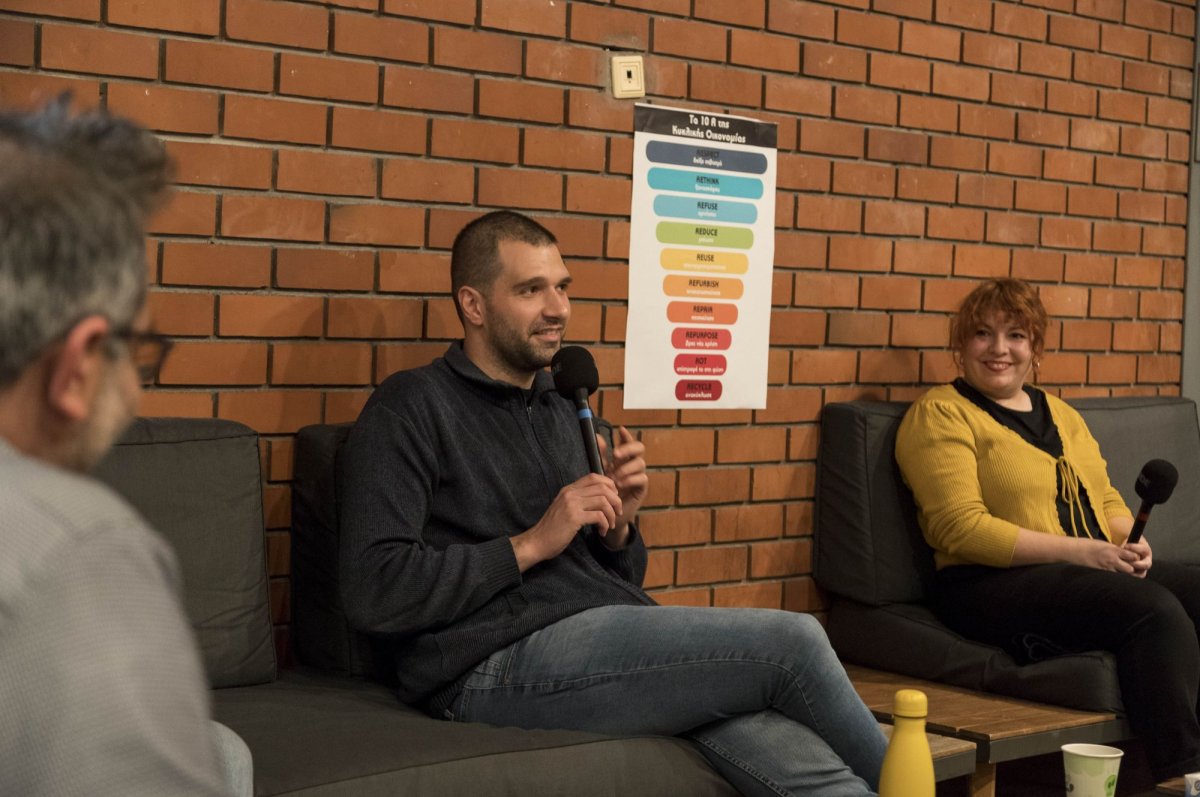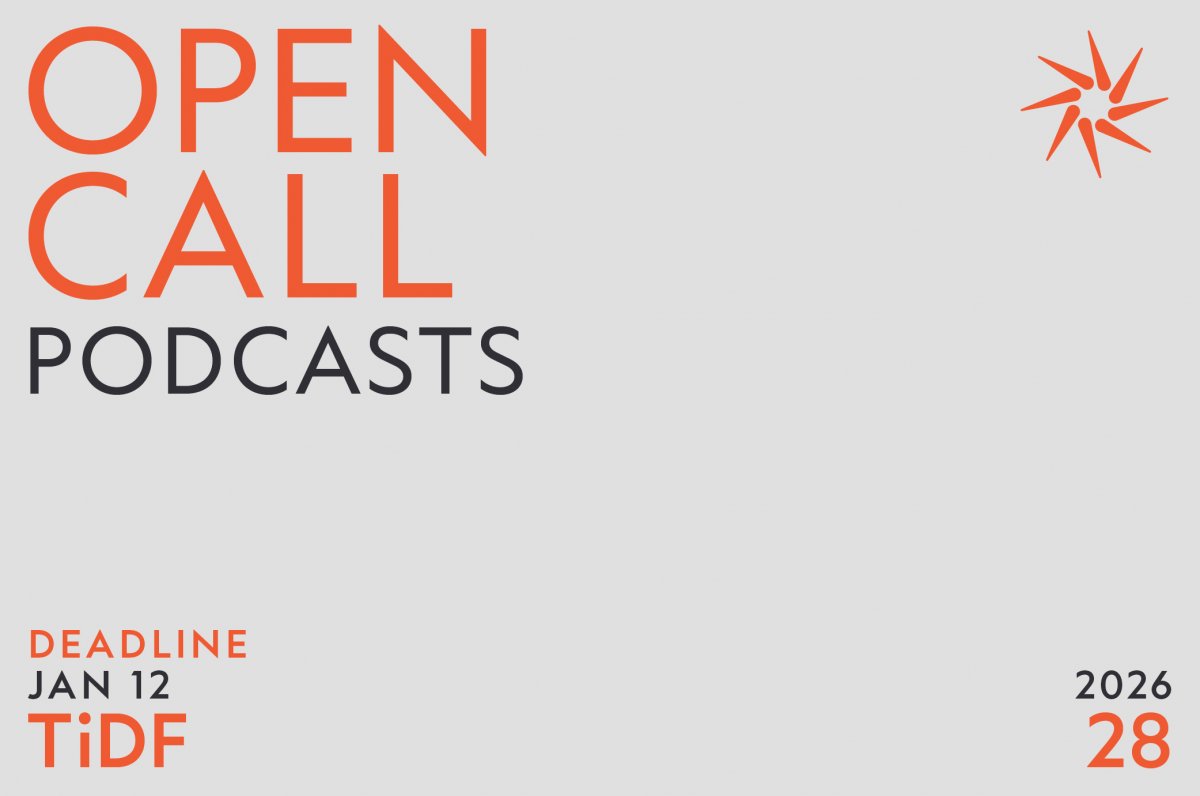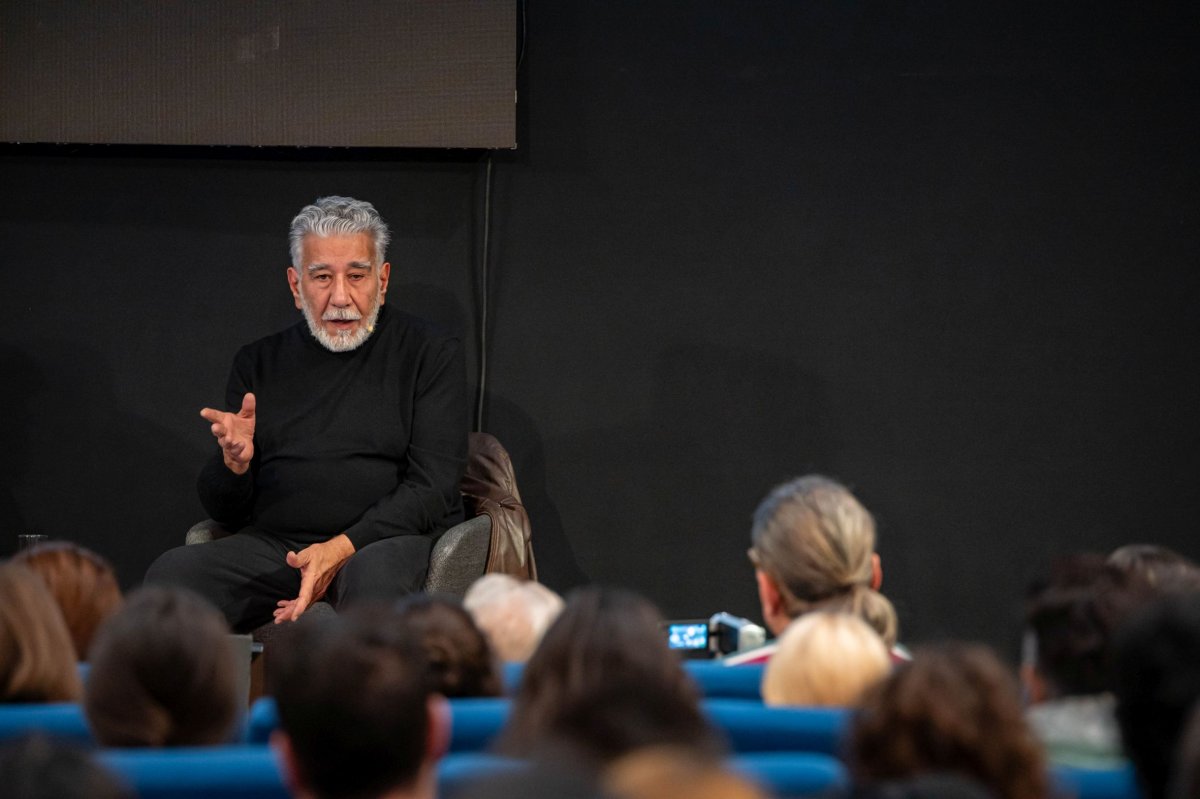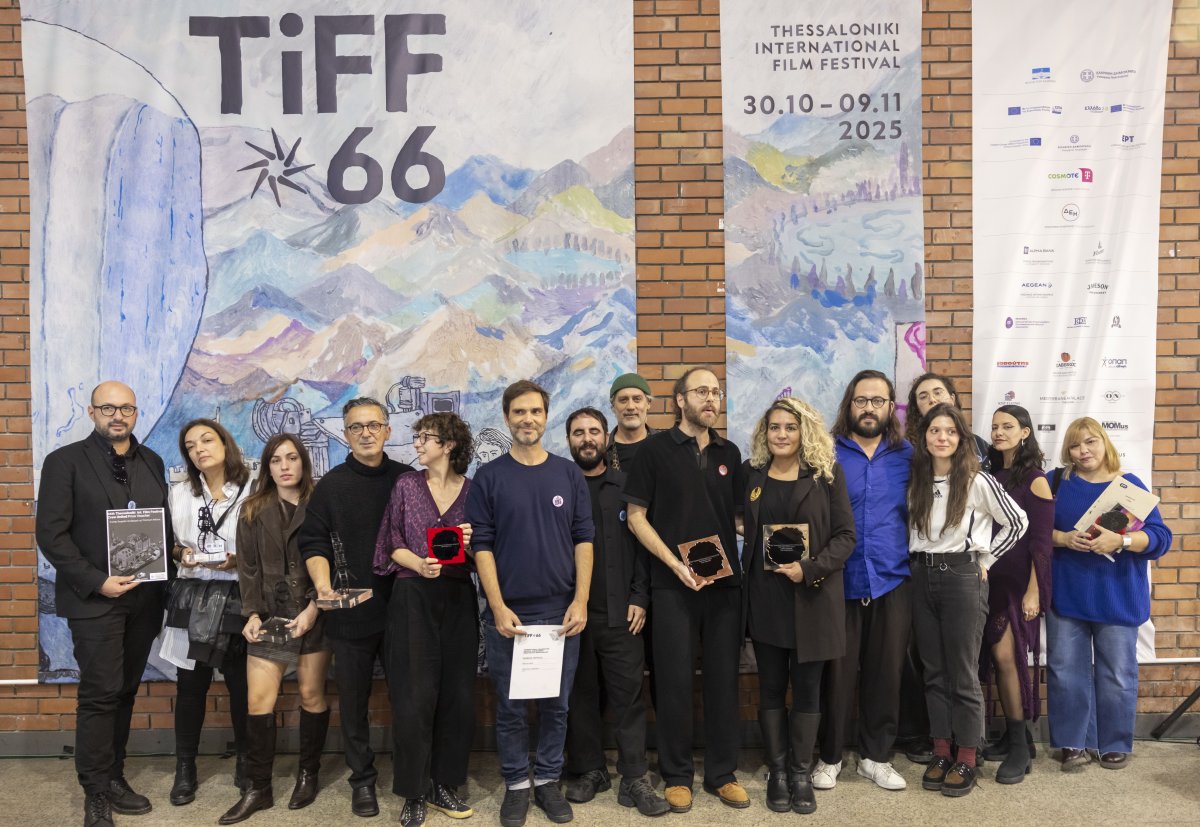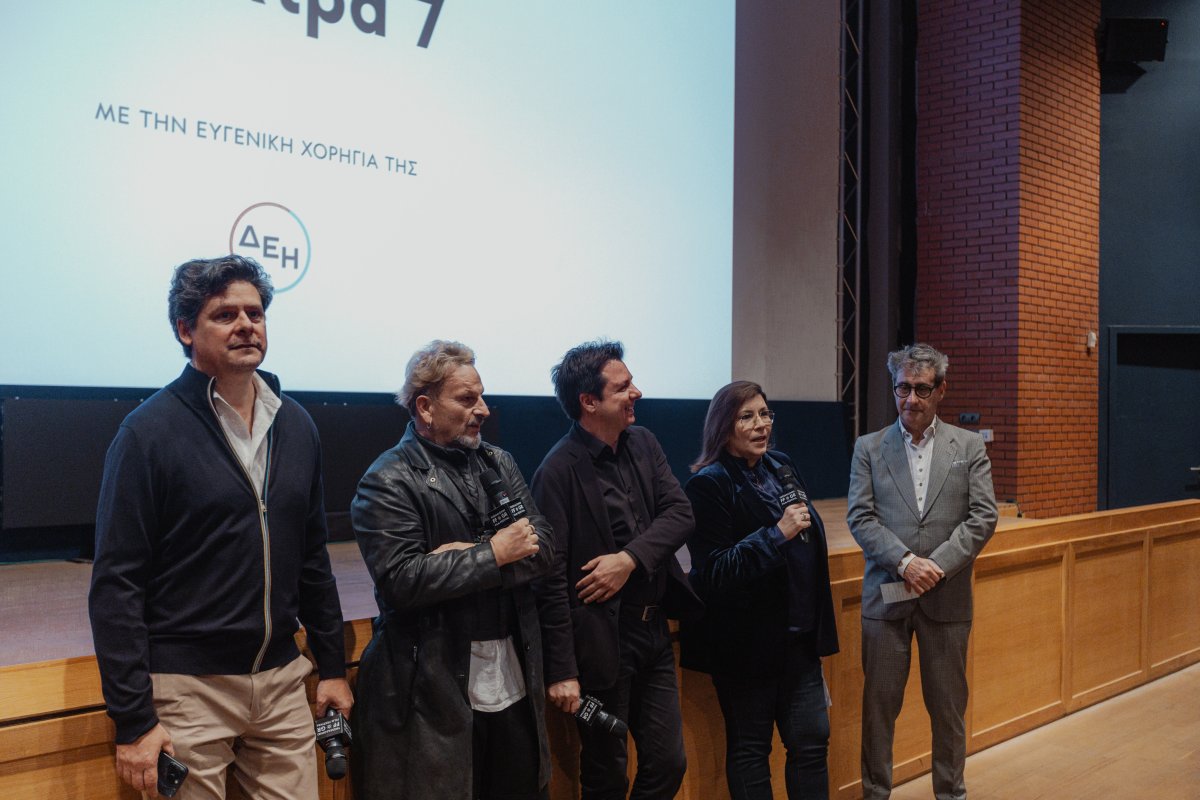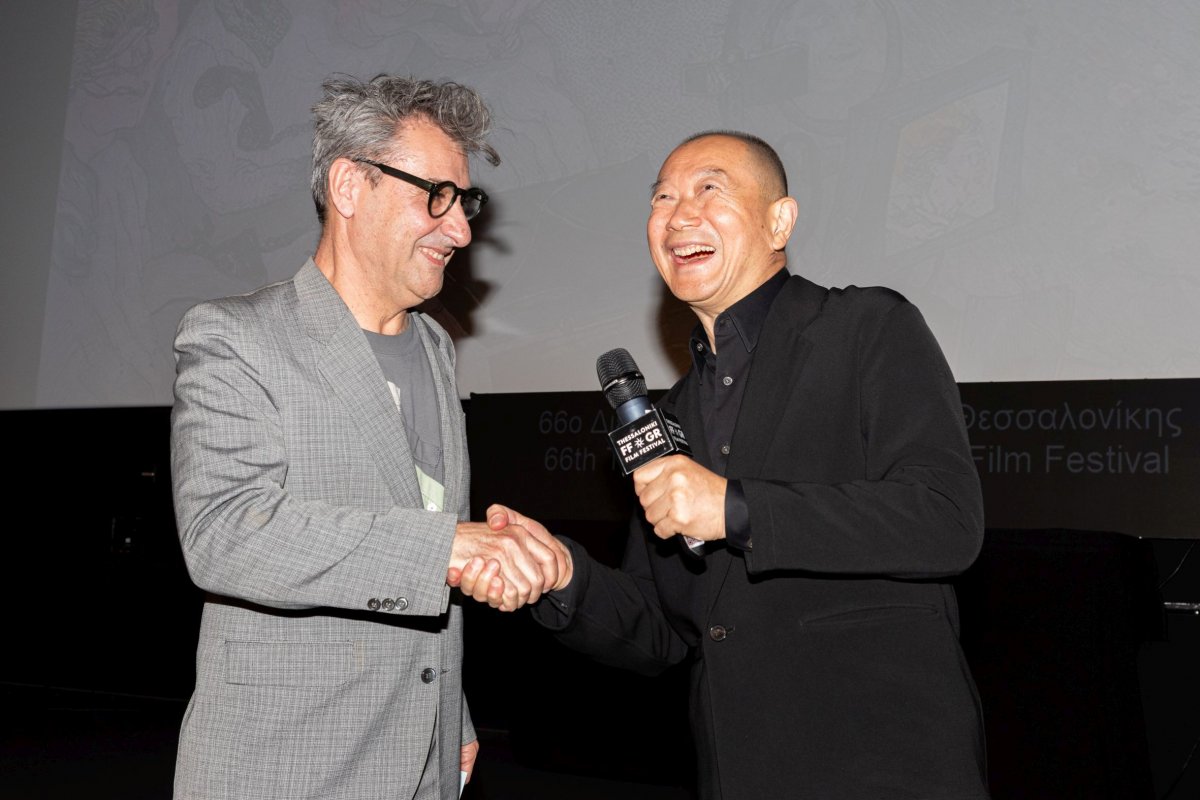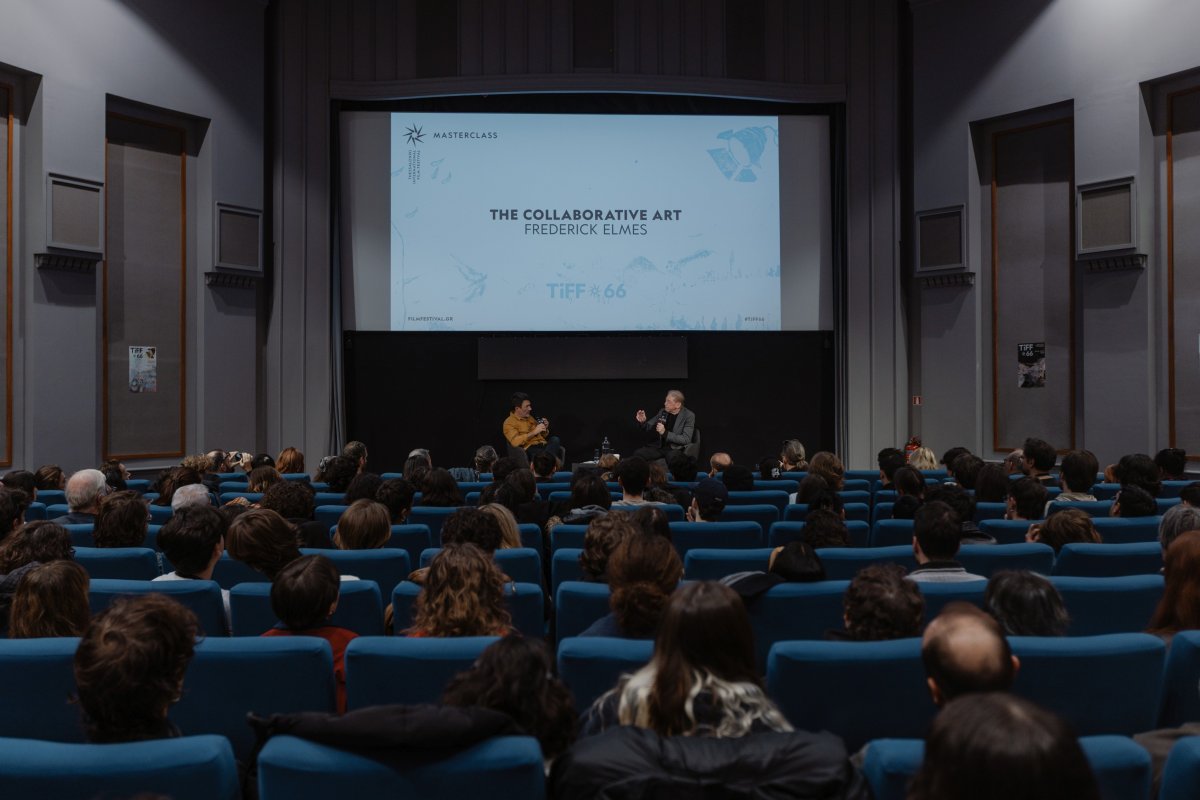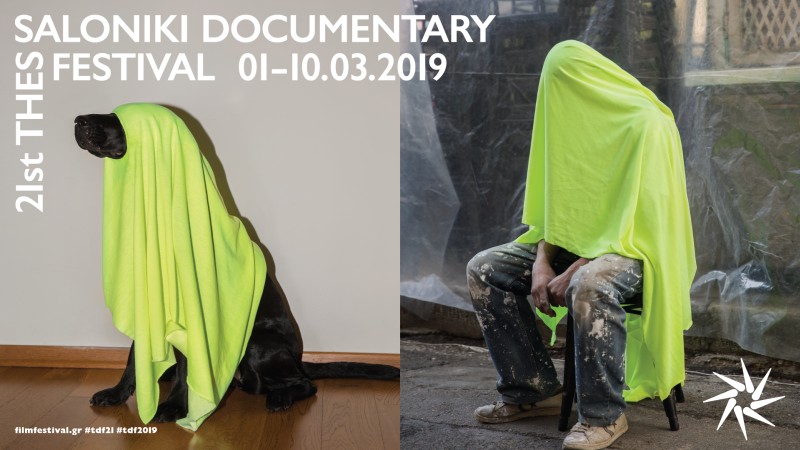On the occasion of the events hosted by the 25th Thessaloniki Documentary Festival's Agora, the sixth meeting and discussion of the Climate Hub took place on Friday, March 10th, at Warehouse C. Climate Hub is the Festival’s new initiative towards the goal of sustainability and it includes a series of talks and discussions involving organizations, groups, and experts working in the field of environmental and social sustainability.
The main speakers at this session, titled Climate Change: the DOCument of sustainable choices, were InCommOn's education program coordinator and NDI facilitator Filippos Nachmias, and InCommOn's urban innovation manager, Sophie Sarri. The discussion focused on how we could contribute to the mitigation of climate change through the adoption of good circular approaches and practices in the various aspects of cinematic reality. The meeting was participatory in nature and had the aim of (re)thinking and sharing ideas and applications on the issue. It was moderated by the sustainability coordinator of the Thessaloniki Documentary Festival, Emma Doxiadi.
At the beginning, the speakers introduced the audience to the concept of circularity, as well as to the organization InCommOn and what it stands for. "The climate crisis and change we know about. It has big consequences. One of the things that produces big impacts on the system is the so-called linear model on which our society is based. It is what we know because we have grown up in it. We extract raw materials, produce things, use them, and then eventually we devalue and discard them, resulting in them ending up in landfills. When we talk about circularity and circular economy, what we want to investigate whether, at all stages of this process, from the initial phase to the moment of disposal, we can either reduce the footprint, save energy, or extend the lifespan of the things we use so that they do not end up in landfills. And all this will be done with the highest possible efficiency. Recycling is one of the 10 to 15 good circular economy practices. It is useful, but not the best. In the practical process of recycling that we know, products have already reached an advanced stage of decomposition, have been put in a bin, and we spend large amounts of energy to dissolve them, bring them back to a state of raw materials, and eventually reuse a percentage of them because something is always lost. But the question we are concerned with is before the product reaches the bin, what can we do? And there is a lot we can do," Nachmias pointed out.
"InCommOn in practice deals with the circular economy through community activation. It tries, therefore, to explore and study how the principles and practices of the circular economy could become part of everyone's daily lives. InCommOn currently has various projects that deal with a specific aspect of the circular economy and target different groups within the community each time. However, all of them serve the same purpose, which is community activation starting from the scale of a neighborhood, with the aim of seeing long-term change," explained Sophia Sarri.
A change, which, as Mr. Nachmias pointed out, can be made through the implementation of best practices of circular economy; the 10 R's of Circular Economy as he called them, which are Respect, Rethink, Refuse, Reduce, Reuse, Refurbish, Repair, Repurpose, Rot and Recycle. Mr. Nachmias began by explaining the first five practices, which are the foundation of the circular economy.
"What we present to you is a series of representative practices of the circular economy. The first good practice, therefore, is Respect, which has multiple dimensions. We speak in holistic terms, trying to approach problems in their interconnection. Speaking of Respect, we are talking about an attitude in which you try to respect both yourself and the natural environment. The ecosystem, beyond the value it has for us, has inherent value for itself and its creatures. It is a change of attitude, we are trying to shift towards respectful behaviors. Then, Rethink also concerns attitude. It expresses the effort to reflect on our daily practice. And today this meeting is part of that context. We are considering whether we can do better. Next, Refuse means to reject. I refuse, for example, unnecessary waste, and consumption that is not sustainable. I refuse unnecessary garbage, I prefer to buy things in bulk and not in packaging. I refuse to drive alone in a car, I share it. Reduce follows in the same direction; I try to reduce my environmental footprint. Reuse concerns reuse, that is, all the ways in which I can reuse an object beyond its first use. It is also linked to the fact that an object may be obsolete but can be reused by changing its purpose," Nachmias pointed out.
He then went on to explain the other five practices of the circular economy.
"Refurbish means to reconstruct. Too many times we have things that we can refurbish and fix. Following this, we encounter Repair, which is the subject of a great discussion. There is this populist talk about refrigerators that lasted 30 years. There's a grain of truth to that, not in the sense of idealizing the past, but in the sense that today's product design hastens their devaluation and reinforces consumption cycles. There is a debate about technical capabilities. As long as there are technical capabilities, product design must be done in such a way that they last long and there is no intentional premature devaluation. Construction should also facilitate repair, with detachable parts and spare parts available in the market to avoid the saying "better to buy new" that is often said. Repurpose refers to the same process. Many times, something seemingly discredited can find a completely new use. The pots made from plastic bottles belong in this category. The example of the plastic bottle, of course, can encapsulate many of the principles. Rot is mainly about organic waste, fruit residues and peelings from the natural environment, which pollute the environment when disposed of in mixed waste. When organic residues go to landfills together with industrial products, they do not have the potential to become soil again, as there is no suitable environment. They have very high emissions of greenhouse gases. Rot is very, very important, it can occur in our neighborhoods and homes. The general rule of thumb is that the closer we manage a devalued material to its source of creation, the better. Composting is one such example. The ideal would be to have gardens in our neighborhoods that practice composting. The InCommOn lab is currently trying to transform composting from a household process to a neighborhood process. In general, there is a lot we can bring closer together to avoid the waste that happens when we leave management to centralized levels. At the bottom of the pyramid we reach, Recycle, which is of course a useful practice but at a low level. And there is room for improvement in this process. In recycling, however, as we know it, there are large, more concentrated circles that have their own footprint. As you have seen, we are talking about a lot of options, and each time we have to find those that fit. Many times, even if something is lower down the pyramid, it can be more effective than something that is higher up," explained Mr. Nachmias.
As Mr. Nachmias pointed out, participation is a very important factor in the adoption of circular economy practices. "The participatory phase is very important. Environmental problems are often social problems and problems of democracy and non-participation in institutions. Many times, something doesn't progress because we imposed it by force. It is important to have a voice in our daily lives. We are trying to build such processes of consultation and participation," stressed Nachmias. At this point, the audience was free to ask questions. In particular, the audience wanted to learn about the difficulties of applying circular economy principles in Western-type societies plagued by overconsumption. In this context, a member of the audience wondered whether the reduction in consumption resulting from the implementation of circular economy practices would harm the economy or affect specific groups.
"We don't believe in solutions ‘hand-hurting, hand-cutting’. Being aware and knowing what is happening helps us make changes. However, a change in attitude cannot be made under threat of survival. We need a relative prosperity in the good sense, not one of waste. We want gentle transitions," said Mr. Nachmias. Next, the speakers, responding to a relevant question by Emma Doxiadi, also talked about the concept of environmental footprint, a widely spread notion in the field of environmental sustainability.
"There is a big debate around this and it is very interesting. In reality, all our practices and daily activities can lead to carbon dioxide emissions. While these tools have been developed for many years, the essential question is why we are not progressing. Intuitively, we know what good practices are, but the transition is slow. This is what we wanted to shed light on today. The reason why we are not moving forward and what we could do to move forward faster," said Mr. Nachmias.
Finally, the speakers, in response to a question from the festival’s sustainability coordinator Emma Doxiadi, also talked about ways in which circularity can be applied in the production of a film. "The first step when you start making something more circular is to record. Without recording, we can't make any changes. Therefore, a producer who knows the steps of the process should record everything and then, through discussion with the right people, start making basic, small-scale moves. Because change starts from there, from the small steps. Distance also plays an important role, whether it concerns supply or transportation. As we emphasized in our presentation, what is closer to us is more sustainable and more circular. Finally, the part about managing the waste when it leaves us is also important. After the film, where do all the things we used go? It is important to think about where what we create will end up when we start something,” Sarri pointed out.
"I will also include the concept of participation here. It is important in productions to have a process of group consultation. Relationships should be open, and not everything should be centrally controlled. Each member of the team should be able to have a say. I will also mention the issue of time; these processes require time. Participation involves resources, time, and economic factors. Generally, we would say that it is important to take this issue to heart, in a substantial way, because we are truly interested in it, and not just for marketing purposes. Have that perspective where at every step, you ask yourself, 'Can we make this better, more user-friendly?’" emphasized Mr. Nachmias, concluding the discussion.


